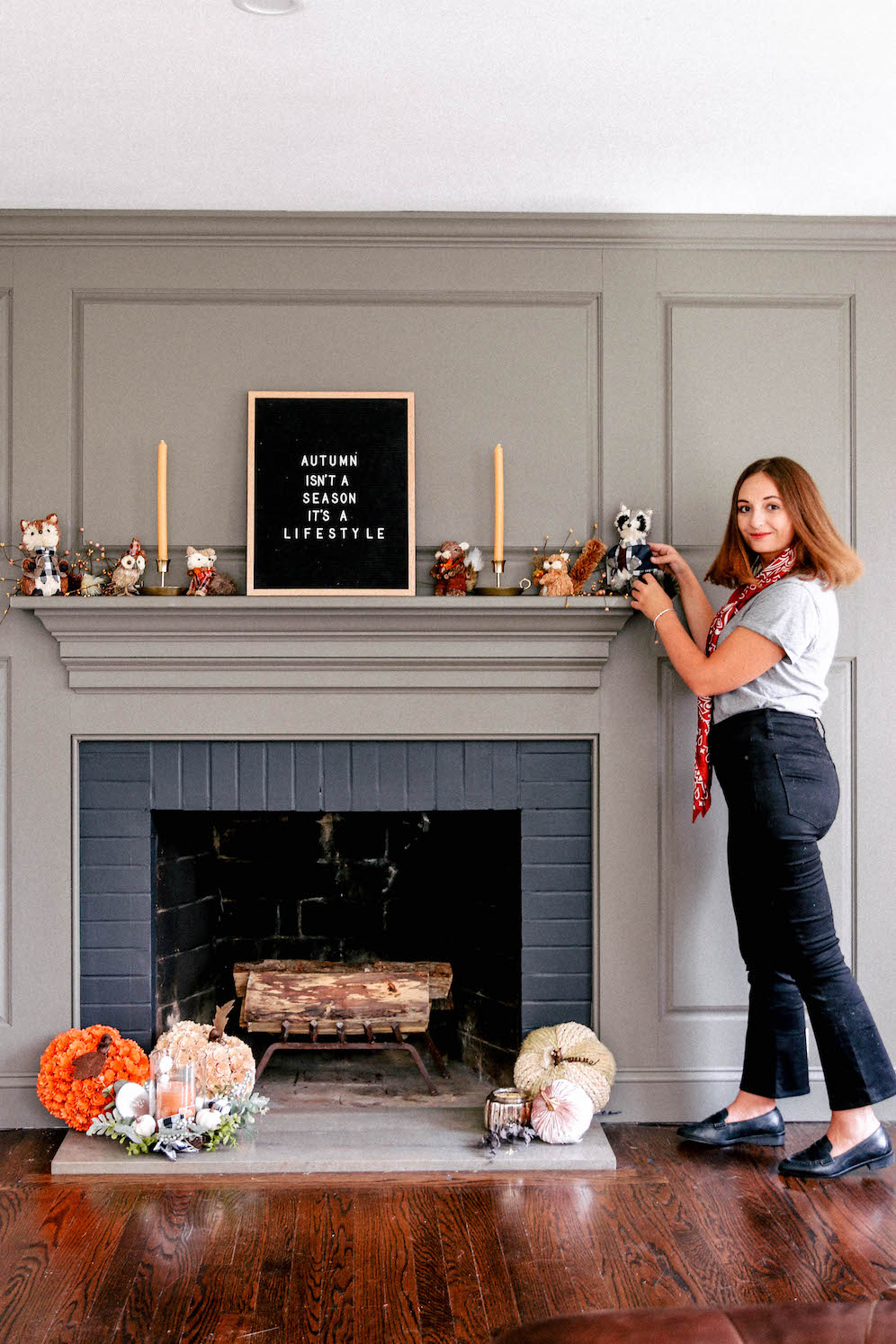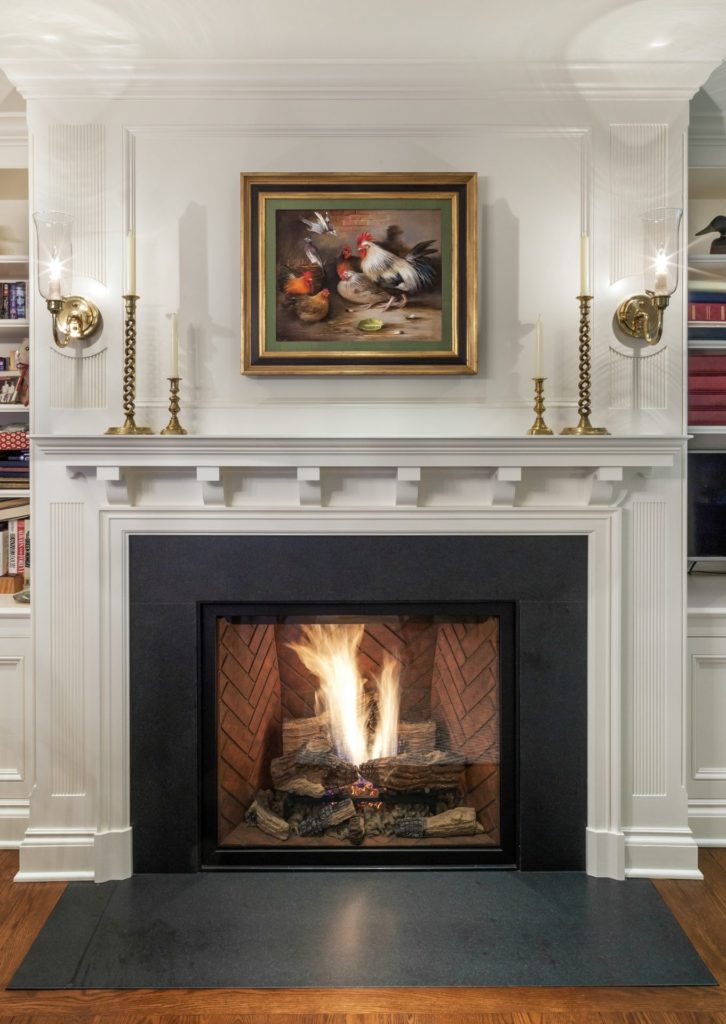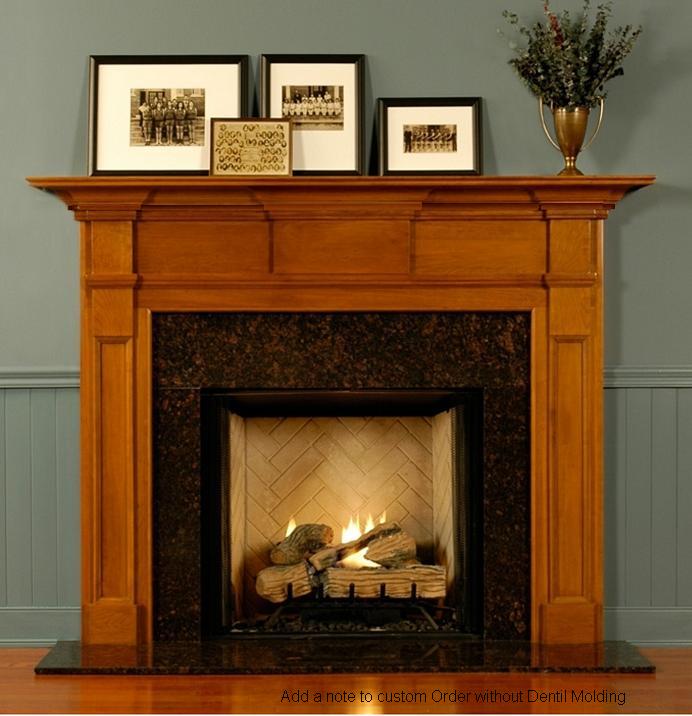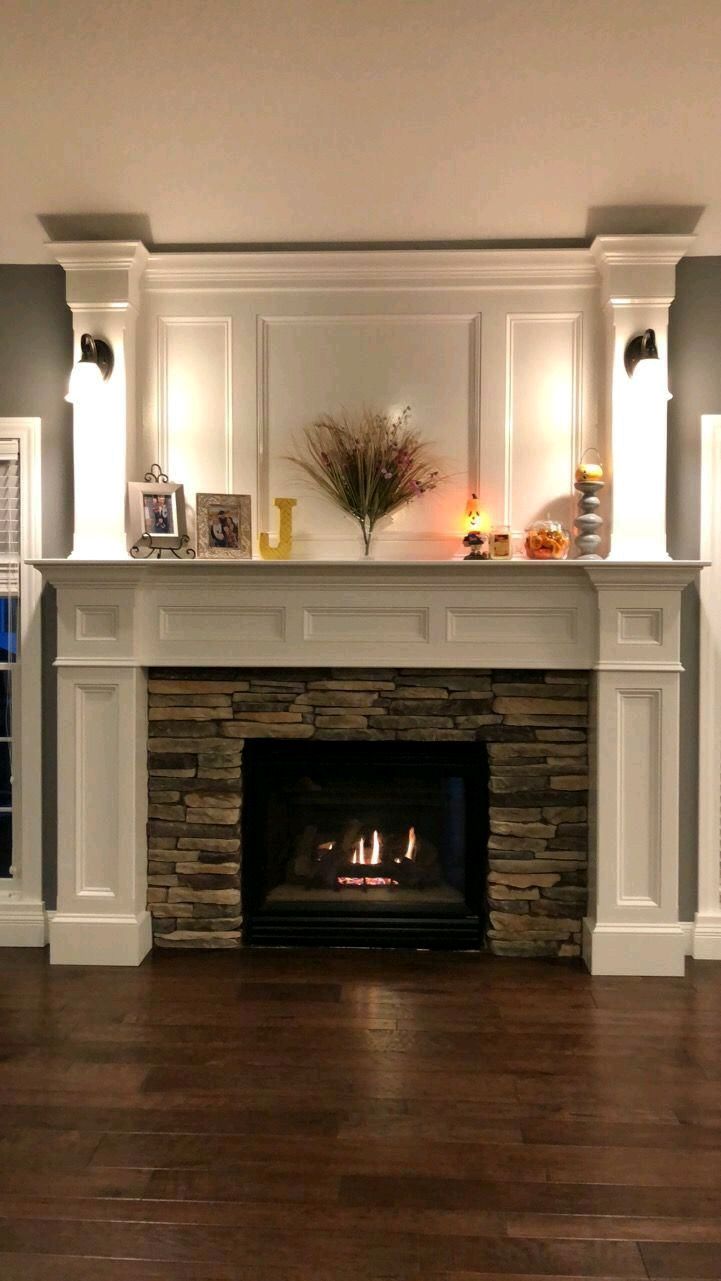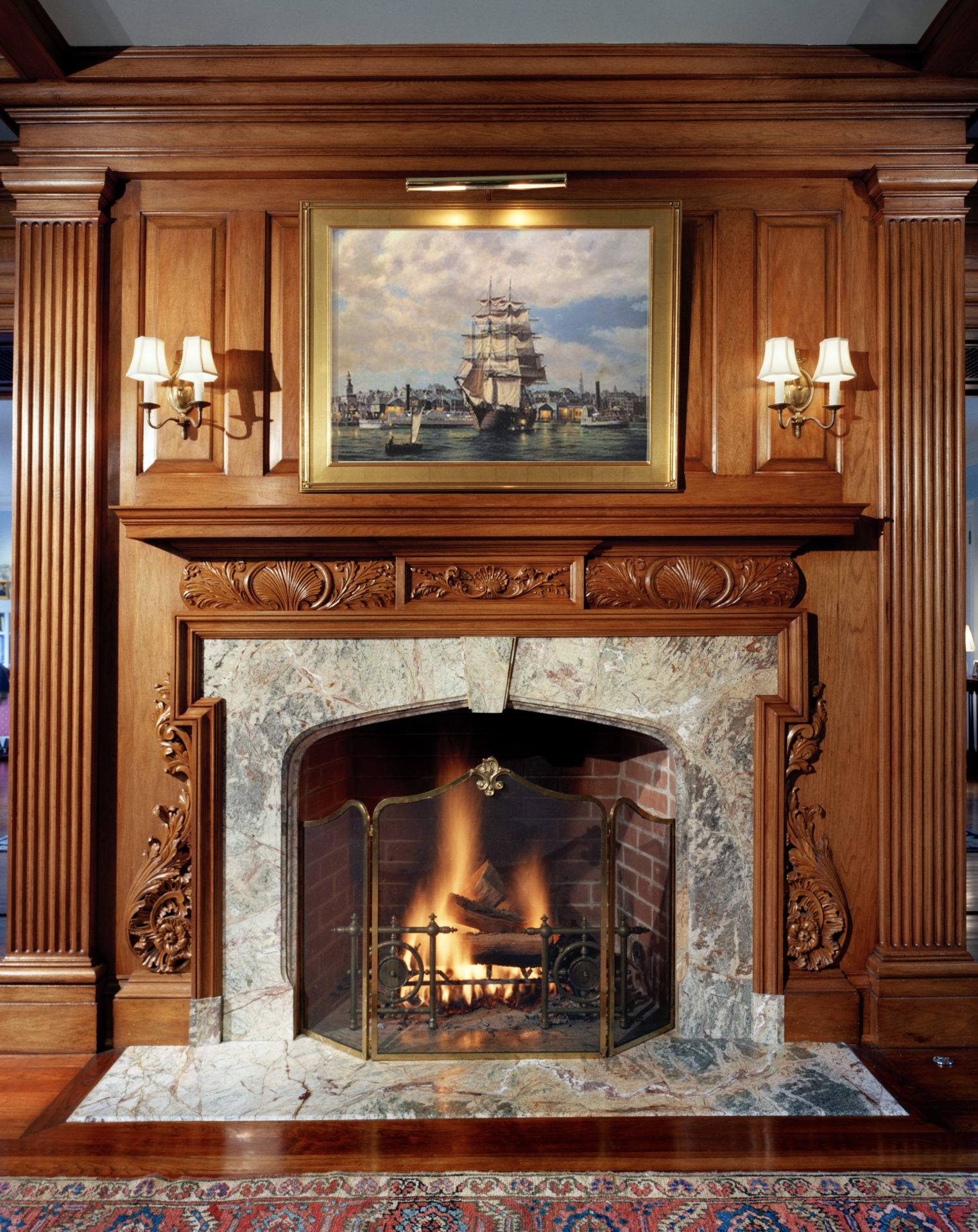A colonial fireplace mantel is the main point of traditional American dwellings, combining historical charm with timeless elegance. These mantels are often symmetrical, with clean lines and classical embellishments influenced by 18th-century architecture. Whether you’re repairing an original colonial home or incorporating period details into a modern area, the appropriate mantel design can create an authentic colonial feel. Below are some major features of colonial fireplace mantels, ranging from material selection to decorative style, to assist you in creating a look that celebrates early American craftsmanship while satisfying modern needs.
Classic Wood Mantel Designs
Wood remains the most realistic material for colonial mantels, with pine and oak being historically accurate choices. Simple rectangular shapes with minor moldings exemplify the practicality of early American dwellings. Many original colonial mantels had basic surfaces with little adornment, emphasizing fine construction rather than intricate carvings.
For more formal colonial settings, think about raised panel designs with classical pilasters. These architectural components emphasize vertical lines while preserving the period’s understated grace. The Federal style, which appeared later in the colonial period, included more refined elements such as delicate reeding and fluting.
Staining wood mantels in traditional finishes improves their colonial appearance. Warm honey tones and deeper walnut hues were common in early American stains. Milk paint, which was popular during the colonial era, can replicate accurate period hues while allowing the wood grain to show through slightly for a weathered look.
Stone and Brick Mantel Options
Fieldstone mantels have a rustic colonial character that complements early saltbox or farmhouse types. Irregular stone patterns with mortar joints highlight the handcrafted nature of colonial craftsmanship. A basic timber mantel shelf frequently sits on stone surrounds, combining materials sensibly.
Brick mantels are another historically accurate alternative, particularly for homes in the Mid Atlantic states. Colonial bricklayers developed complicated patterns such as Flemish bond, which alternates header and stretcher bricks. Whitewashing brick produces a light, airy feel while preserving texture, as seen in many colonial homes.
Soapstone or slate provides a more polished stone appearance. These materials were employed in more upscale colonial residences, particularly in urban areas. Their smooth surfaces and delicate veining provide refinement while adhering to the period’s material palette.

Proportional and Scale Considerations
Authentic colonial mantels have classical proportions, measuring roughly one-seventh of the wall height. This provides a balanced visual weight without dominating the room. The mantel’s height is usually consistent with major architectural elements such as chair rails or window sills.
Depth is important for both aesthetics and function. Original colonial mantels extended just enough to accommodate candles or basic ornaments. Modern versions frequently enhance this depth significantly for modern purposes while retaining the shallow profile typical of the period.
The firebox aperture should be proportionate to the mantel size. Colonial fireplaces were typically smaller than modern ones, with openings measuring no more than 36 inches. Surrounding this with correctly scaled moldings ensures historical realism.
Decorative Moldings and Trim
Instead of extravagant Victorian profiles, colonial mantels often have basic moldings such as ogees or quarter round. A basic mantel may consist of only three elements: a shelf, a frieze, and supporting legs. More ornate variants have dentil molding or egg and dart designs.
Chair rail molding frequently wraps around the room, crossing with the mantel for continuity. This results in a harmonious appearance that connects the fireplace to the overall architecture. Matching the mantel trim to the other woodwork in the room adds authenticity.
Consider adding fluted pilasters or reeded features to Georgian-style colonial mantels. These classical aspects appeared in more affluent colonial homes influenced by English style. Keep decorations symmetrical, as balance was a key feature of colonial aesthetics.
Authentic Colonial Mantel Style
Traditional colonial mantels emphasized symmetry and simplicity. Place matching candlesticks on either end of a center clock or ornamental dish. This balanced arrangement exemplifies the period’s ordered sense.
For historical design, consider using utilitarian colonial artifacts such as pewter tankards, wooden chests, or brass lanterns. Avoid overcrowding in early American households, which had few yet meaningful artifacts. Seasonal decorations could include simple evergreen boughs or dried flowers.
Hanging a convex mirror over the mantel is a traditional colonial technique. These spherical mirrors, often with golden frames, helped to monitor the room while also providing reflected light. Select portraits or landscapes in period-appropriate frames for your artwork.
Modern Adaptations of Colonial Design
Contemporary adaptations of colonial mantels may simplify conventional elements to achieve cleaner lines. Using colonial proportions with modern materials such as MDF results in an economical alternative that retains the essence of the original form.
Incorporating colonial design features onto a floating mantel provides a unique twist. The horizontal emphasis adheres to colonial principles while meeting modern minimalist sensibilities. Pairing a historic wood mantel with a modern surround provides an intriguing intergenerational interaction.
For transitional areas, consider painting a colonial-style mantel in modern colors. Classic gray or soft black preserves historical flavor while becoming contemporary. This strategy works especially effectively in homes that combine traditional architecture with modern design.
What wood species were traditionally utilized for colonial mantels?
Early American craftsmen often employed locally accessible timbers for mantels, with pine being the most popular in New England due to its abundance. Oak appeared in larger mansions, whereas cherry and walnut were employed in more upscale homes, particularly in the Mid Atlantic colonies. These timbers were frequently left with natural finishes or coated with milk paint. Poplar is a common material used in modern reproductions since it is inexpensive and paintable. To maintain colonial simplicity, pick straight grain patterns and avoid highly dramatic figure.
How can I recognize an original colonial mantel?
Original colonial mantels have hand cut joinery, uneven tool marks, and wooden pegs instead of nails. The wood will have a patina from years of use and may show signs of several paint applications. Authentic mantels are generally shallower than current equivalents. Look for backboards composed of large planks instead than plywood. Original mantels either lack or have a relatively modest mantel shelf, although complex shelves became increasingly widespread later. A historic preservation professional can help confirm authenticity.
What is the distinction between early and late colonial mantel styles?
Early colonial mantels (1600s to early 1700s) were relatively simple, sometimes consisting of a single timber beam across a stone or brick aperture. As prosperity increased, Georgian influences introduced more classical elements such as pilasters and pediments. Late colonial mantels (post-1750) have polished moldings and symmetrical designs inspired by English pattern books. Federal period mantels (after 1780) were even more delicate, with reeded embellishments and lighter proportions. The level of adornment frequently indicated the homeowner’s financial and social status.
Can I use a colonial mantel with a modern fireplace?
Yes, colonial-style mantels may effectively frame modern fireplaces. The goal is to ensure sufficient clearances between combustible materials and the firebox while adhering to local building requirements. Many manufacturers provide colonial reproduction mantels intended for modern applications. For gas fireplaces, select a mantel that allows for proper venting. Electric inserts are ideal for colonial mantels because they do not require any particular venting considerations. Always refer to the installation instructions for both the mantel and fireplace unit.
How Do I Clean and Maintain an Antique Colonial Mantel?
Gentle cleaning maintains historic mantels without destroying their patina. To remove dust, use a soft brush, then a barely moist cloth for grime. Avoid strong chemicals that may remove existing finishes. Mild soap and water are ideal for cleaning painted surfaces. Waxing unpainted wood protects the surface while preserving its weathered appearance. Consult a restoration specialist right away if you notice any woodworm or damage. Keep antique mantels away from direct heat to avoid drying and cracking. Regular dusting avoids accumulation, which can obscure fine features.
Are colonial mantels suitable for modern homes?
Colonial mantels can look great in modern environments if they are tastefully integrated. Their clean lines and symmetrical designs match modern aesthetics nicely. A colonial mantel adds architectural prominence to open concept houses, defining the living space. To create a coherent effect, combine the mantel with other traditional elements such as wainscoting or crown molding. Alternatively, use the mantel as a single historic piece against modern design to create an intended contrast. Colonial design’s timeless proportions keep it from feeling too fashionable or out of date.
Colonial Fireplace Mantel – FineWoodworking
Fireplace Designs We Love Vanderhorn Architects
Best Fireplace Mantel Ideas – Fireplace Mantel Design
Beautiful Colonial Fireplaces ideas colonial decor
Solid Oak Claremont Flush Fireplace Mantel in Colonial Maple Finish (Colonial Maple 40 in. x 48 in.)
Related Posts:
